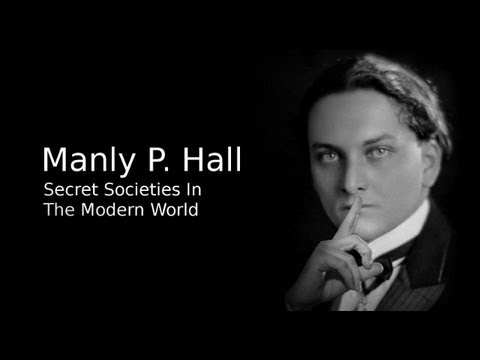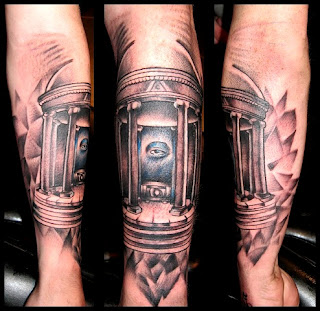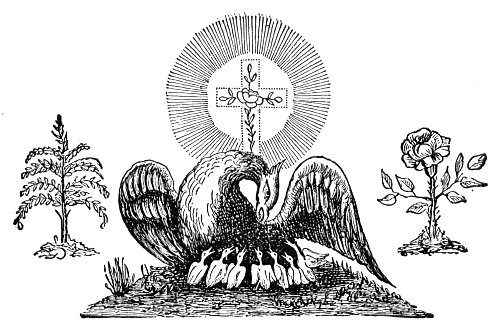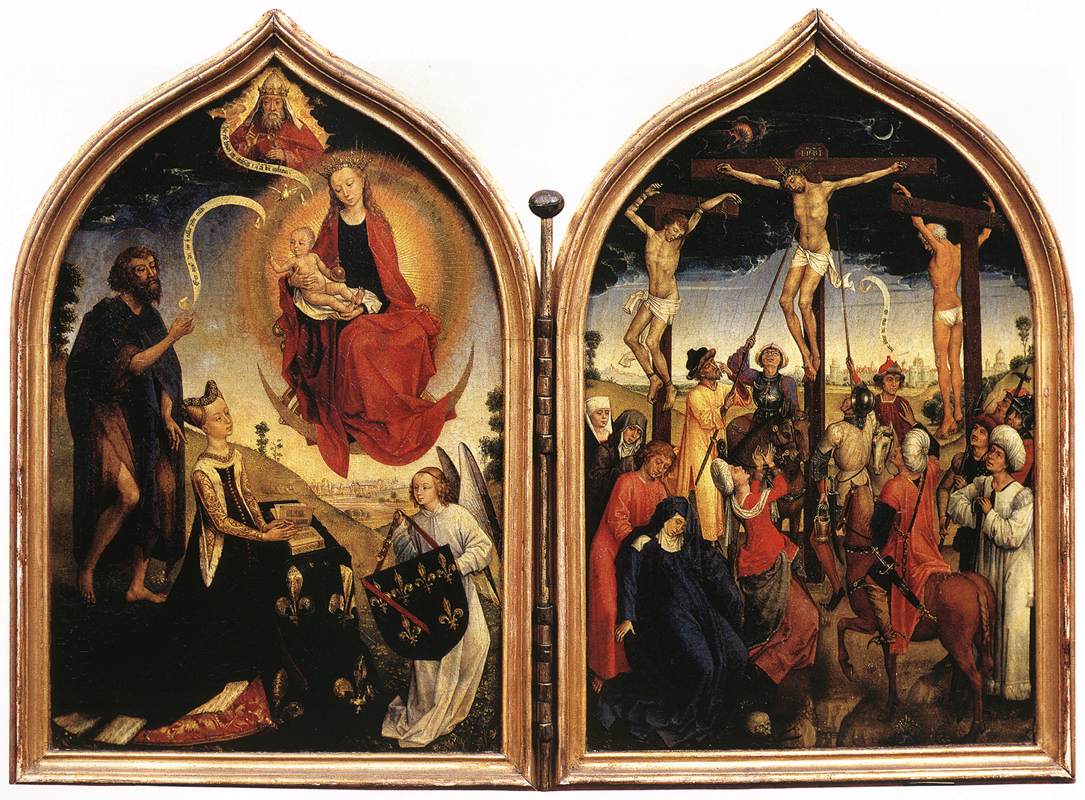After they had sworn to this code five of the Brothers departed to distant lands, and a year later two of the others also went their way, leaving Father C.R. C. alone in the “House of the Holy Spirit.” Year after year they met with great joy, for they had quietly and sincerely promulgated their doctrines among the wise of the earth.
When the first of the Order died in England, it was decided that the burial places of the members should be secret. Soon afterward Father C.R.C. called the remaining six together, and it is supposed that then he prepared his own symbolic tomb. The Fama records that none of the Brothers alive at the time of its writing knew when Father C.R.C. died or where he was buried. His body was accidentally discovered 120 years after his death when one of the Brothers, who possessed considerable architectural skill, decided to make some alterations in the “House of the Holy Spirit.” [It is only suspected that the tomb was in this building.]
While making his alterations, the Brother discovered a memorial tablet upon which were inscribed the names of the early members of the Order. This he decided to transfer to a more imposing chapel, for at that time no one knew in what country Father C.R.C. had died, this information having been concealed by the original members. In attempting to remove the memorial tablet, which was held in place by a large nail, some stones and plastering were broken from the wall, disclosing a door concealed in the masonry. The members of the Order immediately cleared away the rest of the débris and uncovered the entrance to a vault. Upon the door in large letters were the words: POST CXX ANNOS PATEBO. This, according to the mystic interpretation of the Brethren, meant, “In 120 years I shall come forth.”
The following morning the door was opened and the members entered a vault with seven sides and seven corners, each side five feet broad and eight feet high. Although the sun never penetrated this tomb, it was brilliantly illuminated by a mysterious light in the ceiling. In the center was a circular altar, upon which were brass plates engraved with strange characters. In each of the seven sides was a small door which, upon being opened, revealed a number of boxes filled with books, secret instructions, and the supposedly lost arcanum of the Fraternity.
Upon moving the altar to one side a brass cover was disclosed. Lifting this revealed a body, presumedly that of C.R.C., which, although it had lain there 120 years, was as well preserved as though it had just been interred. It was ornamented and attired in the robes of the Order, and in one hand was clasped a mysterious parchment which, next to the Bible, was the most valued possession of the Society. After thoroughly investigating the contents of the secret chamber, the brass plate and altar were put back in place, the door of the vault was again sealed, and the Brothers went their respective ways, their spirits raised and their faith increased by the miraculous spectacle which they had beheld.
The document ends by saying in effect, “In accordance with the will of Father C.R.C., the Fama has been prepared and sent forth to the wise and learned of all Europe in five languages, that all may know and understand the secrets of the august Fraternity. All of sincere soul who labor for the glory of God are invited to communicate with the Brethren and are promised that their appeal shall be heard, regardless of where they are or how the messages are sent. At the same time, those of selfish and ulterior motives are warned that only sorrow and misery will attend any who attempt to discover the Fraternity without a clean heart and a pure mind.”
Such, in brief, is the story of the Fama Fraternitatis. Those who accept it literally regard Father C.R.C. as the actual founder of the Brotherhood, which he is believed to have organized about 1400. The fact that historical corroboration of the important points of the Fama has never been discovered is held against this theory. There is no proof that Father C.R.C. ever approached the learned men of Spain. The mysterious city of Damcar cannot be found, and there is no record that anywhere in Germany there existed a place where great numbers of the halt and sick came and were mysteriously healed. A. E. Waite’s The Secret Tradition in Freemasonry contains a picture of Father C.R.C. showing him with a long beard upon his breast, sitting before a table upon which burns a candle. One hand is supporting his head and the other is resting the tip of its index finger on the temple of a human skull. The picture, however (see plate at head of chapter), proves nothing. Father C.R.C. was never seen by other than members of his own Order, and they did not preserve a description of him. That his name was Christian Rosencreutz is most improbable, as the two were not even associated until the writing of the Chymical Nuptials.
THE SECOND POSTULATE
Those Masonic brethren who have investigated the subject accept the historical existence of the “Brotherhood of the Rose Cross” but are divided concerning the origin of the Order. One group holds the society originated in mediæval Europe as an outgrowth of alchemical speculation. Robert Macoy, 33°, believes that Johann Valentin Andreæ, a German theologian, was the true founder, and he also believes it possible that this divine merely reformed and amplified an existing society which had been founded by Sir Henry Cornelius Agrippa. Some believe that Rosicrucianism represented the first European invasion of Buddhist and Brahmin culture. Still others hold the opinion that the “Society of the Rose Cross” was founded in Egypt during n the philosophic supremacy of that empire, and that it also perpetuated the Mysteries of ancient Persia and Chaldea.

Moe is the founder of GnosticWarrior.com. He is a father, husband, author, martial arts black belt, and an expert in Gnosticism, the occult, and esotericism.






